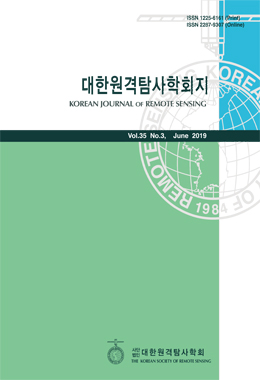Automatic Target Recognition (ATR) using Synthetic Aperture Radar (SAR) has been attracted attention in the fields of surveillance, reconnaissance, and national security due to its advantage of all-weather and day-and-night imaging capabilities. However, there have been some difficulties in automatically identifying targets in real situation due to various observational and environmental conditions. In this paper, ATR problems in Extended Operating Conditions (EOC) were investigated. In particular, we considered partial occlusions of the target (10% to 50%) and differences in the depression angle between training (17°) and test data (30° and 45°). To simulate various occlusion conditions, SARBake algorithm was applied to Moving and Stationary Target Acquisition and Recognition (MSTAR) images. The ATR accuracies were evaluated by using the template matching and Adaboost algorithms. Experimental results on the depression angle showed that the target identification rate of the two algorithms decreased by more than 30% from the depression angle of 45° to 30°. The accuracy of template matching was about 75.88% while Adaboost showed better results with an accuracy of about 86.80%. In the case of partial occlusion, the accuracy of template matching decreased significantly even in the slight occlusion (from 95.77% under no occlusion to 52.69% under 10% occlusion). The Adaboost algorithm showed better performance with an accuracy of 85.16% in no occlusion condition and 68.48% in 10% occlusion condition. Even in the 50% occlusion condition, the Adaboost provided an accuracy of 52.48%, which was much higher than the template matching (less than 30% under 50% occlusion).


